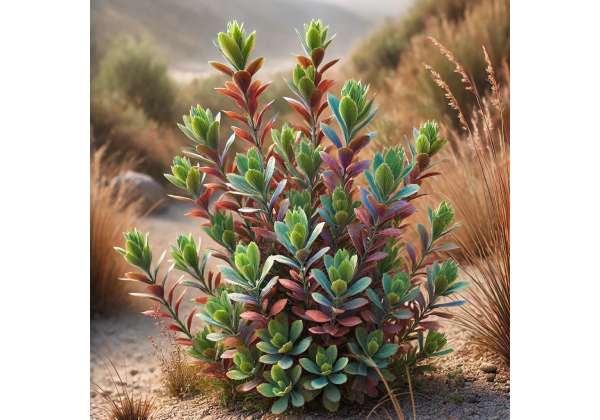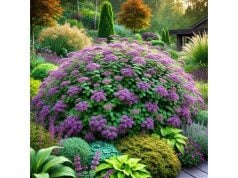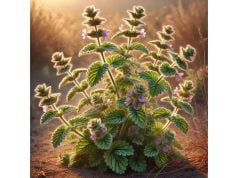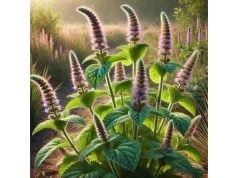Himalayan Saltbush is a resilient, salt-tolerant herb native to the rugged, high-altitude regions of the Himalayas. Celebrated for its unique ability to thrive in saline soils and harsh climatic conditions, this remarkable plant has been traditionally used for its detoxifying, anti-inflammatory, and antioxidant properties. Its nutrient-dense leaves and stems are employed in a variety of herbal remedies and culinary applications, helping to support digestive health, kidney function, and overall wellness. In this comprehensive guide, we delve into the botanical profile, detailed phytochemistry, extensive health benefits, practical uses, and the latest scientific research that underscores the value of Himalayan Saltbush.
Table of Contents
- Plant Profile and Identification
- Phytochemistry and Active Compounds
- Health Benefits and Inherent Properties
- Uses and Safety Guidelines
- Scientific Research and Key Studies
- Frequently Asked Questions
Plant Profile and Identification
Himalayan Saltbush is a hardy, halophytic herb well adapted to the saline and arid conditions found in parts of the Himalayan region. Taxonomically placed in the Amaranthaceae family, this shrub exhibits several distinctive botanical characteristics that enable it to flourish where few plants can survive.
Morphological Characteristics
The Himalayan Saltbush typically grows as a low-lying shrub reaching heights of 30–60 centimeters, though in optimal conditions it may form dense, sprawling mats that stabilize the soil. Its leaves are succulent and often gray-green in color, with a slightly glaucous appearance that helps reflect intense sunlight. The leaf surfaces are typically covered with a thin, waxy cuticle that minimizes water loss—a vital adaptation to both high salinity and low water availability. The plant produces small, inconspicuous flowers that are grouped in dense clusters; these are usually wind-pollinated and give way to tiny, hardy seeds capable of dispersal over wide areas.
Growth Environment and Adaptations
Native to the saline and semi-arid landscapes of the Himalayas, Himalayan Saltbush is found growing on rocky slopes, along riverbanks, and in salt-affected soils. Its remarkable salt tolerance is attributed to specialized physiological mechanisms that include osmotic adjustment and selective ion uptake, allowing the plant to maintain cellular integrity even under high-salt stress. Additionally, its deep and fibrous root system not only secures the plant in unstable substrates but also facilitates the efficient extraction of water and nutrients from nutrient-poor soils.
Ecological Role and Cultural Significance
In its native habitat, Himalayan Saltbush plays a critical ecological role. By forming dense ground cover, it helps prevent soil erosion on steep, exposed slopes and contributes to the stabilization of the fragile mountain ecosystem. Its ability to thrive in saline conditions also makes it a pioneer species, often colonizing disturbed lands and paving the way for other native flora.
Culturally, Himalayan Saltbush has been valued by local communities for generations. Traditional healers have long utilized its leaves and stems in remedies aimed at promoting detoxification, regulating digestion, and supporting kidney function. Moreover, the plant’s resilience and unique taste have led to its incorporation in local culinary practices—often as a seasoning or a component in herbal teas—making it both a medicinal and gastronomic treasure in the region.
Conservation Considerations
Despite its hardy nature, Himalayan Saltbush faces threats from overharvesting and habitat degradation due to expanding agricultural activities and climate change. Conservation initiatives now focus on sustainable harvesting practices and habitat restoration to ensure that this valuable species remains available for both ecological balance and traditional use. Research efforts are also underway to develop propagation techniques that can support commercial cultivation without compromising wild populations.
In summary, the botanical profile of Himalayan Saltbush reveals a unique, salt-tolerant herb with distinctive morphological features and a vital ecological role in the Himalayan landscape. Its adaptations to extreme environments not only ensure its survival but also endow it with remarkable medicinal and culinary properties. As both traditional knowledge and modern science continue to uncover its potential, Himalayan Saltbush stands as a testament to nature’s ingenuity and resilience.
Phytochemistry and Active Compounds
The robust therapeutic potential of Himalayan Saltbush is underpinned by its diverse phytochemical composition. Researchers have identified a wide array of bioactive compounds in this herb, each contributing to its health-promoting properties. Through advanced extraction and analysis techniques, scientists have gained insight into the chemical constituents that make Himalayan Saltbush a powerful natural remedy.
Key Bioactive Constituents
- Flavonoids
Flavonoids such as quercetin, kaempferol, and isorhamnetin are prevalent in Himalayan Saltbush. These compounds are well-known for their antioxidant capabilities, effectively neutralizing free radicals and reducing oxidative stress. Their anti-inflammatory properties also help to alleviate chronic inflammation, which is linked to numerous health conditions. - Phenolic Acids
Phenolic acids, including caffeic acid, ferulic acid, and gallic acid, are significant contributors to the herb’s overall antioxidant activity. These compounds work synergistically to protect cells from damage, reduce inflammation, and support the immune system. - Saponins
Saponins are natural glycosides found in the leaves and stems of Himalayan Saltbush. They exhibit a range of biological activities, including anti-inflammatory, antimicrobial, and immune-boosting effects. Saponins also enhance the bioavailability of other active compounds, making them integral to the herb’s overall efficacy. - Tannins
Tannins are abundant in Himalayan Saltbush and are responsible for its astringent properties. They help in tightening tissues, reducing bleeding, and inhibiting the growth of pathogens. Tannins have traditionally been used to treat wounds and gastrointestinal disturbances by providing a protective barrier over tissues. - Alkaloids
Some species of saltbush contain alkaloids that contribute to their medicinal properties. These compounds may possess antimicrobial and anti-inflammatory effects, although their concentration is typically lower compared to other phytochemicals in the plant. - Essential Oils
The volatile oils extracted from Himalayan Saltbush carry a distinctive, slightly pungent aroma and possess notable antimicrobial and anti-inflammatory properties. Components such as limonene and pinene in these oils contribute to the plant’s therapeutic effects and are often used in aromatherapy and topical applications. - Minerals and Trace Elements
Being a halophyte, Himalayan Saltbush accumulates various minerals such as magnesium, potassium, calcium, and trace elements like zinc and iron. These minerals are vital for metabolic processes and contribute to the nutritional value of the herb, supporting overall cellular health and function.
Synergistic Interactions and Bioavailability
The bioactive compounds in Himalayan Saltbush do not work in isolation; rather, their synergistic interactions enhance the herb’s overall therapeutic potency. For instance, the combined antioxidant effects of flavonoids and phenolic acids provide a more comprehensive defense against oxidative stress than either group of compounds alone. Similarly, the presence of saponins improves the absorption and effectiveness of other phytochemicals.
Advanced extraction methods—such as supercritical fluid extraction and high-performance liquid chromatography (HPLC)—are employed to preserve these compounds in their natural ratios. Such standardized extracts ensure that the health benefits observed in traditional uses are maintained in modern formulations, whether for dietary supplements, topical creams, or herbal teas.
In essence, the phytochemical landscape of Himalayan Saltbush is both diverse and complex. Its array of flavonoids, phenolic acids, saponins, tannins, and essential oils work together synergistically to support a wide range of health benefits. As scientific research continues to explore these interactions, Himalayan Saltbush stands out as a promising candidate for innovative natural therapeutics.
Health Benefits and Inherent Properties
Himalayan Saltbush offers a multitude of health benefits that have been recognized through centuries of traditional use and are increasingly validated by modern research. Its rich phytochemical profile supports various aspects of physical well-being, from detoxification and digestive support to anti-inflammatory and immune-enhancing effects.
Detoxification and Digestive Support
One of the primary traditional uses of Himalayan Saltbush is its ability to aid in detoxification. The natural saponins and tannins present in the plant help to cleanse the digestive tract by promoting regular bowel movements and binding toxins, which facilitates their elimination from the body. This detoxifying effect supports overall gut health and improves nutrient absorption, making the herb an excellent addition to a cleansing regimen.
Anti-Inflammatory and Antioxidant Protection
Chronic inflammation and oxidative stress are major contributors to many diseases, including arthritis, cardiovascular conditions, and metabolic disorders. Himalayan Saltbush is rich in antioxidants such as flavonoids and phenolic acids that neutralize free radicals and reduce cellular damage. Its anti-inflammatory properties help alleviate pain and swelling in conditions such as joint inflammation and digestive disorders, thereby contributing to long-term health and resilience.
Immune System Enhancement
The immunomodulatory properties of Himalayan Saltbush make it a valuable herb for supporting the body’s natural defenses. Its bioactive compounds stimulate the immune response, enhancing the production of white blood cells and boosting overall immunity. Regular use of the herb, whether through teas or supplements, can help fortify the body against infections and improve recovery from illnesses.
Cardiovascular and Metabolic Benefits
Emerging research indicates that Himalayan Saltbush may offer cardioprotective benefits. The combination of antioxidants, essential minerals, and bioactive compounds helps improve vascular function and reduce blood pressure by promoting healthy blood flow and reducing arterial stiffness. Additionally, the herb’s fiber content supports metabolic health by regulating blood sugar levels and improving lipid profiles, thereby reducing the risk of conditions such as hypertension and type 2 diabetes.
Skin and Wound Healing
Topical applications of Himalayan Saltbush extracts have been traditionally used to treat skin irritations and promote wound healing. The astringent properties of tannins help tighten the skin and reduce inflammation, while the antimicrobial effects protect against infection. These properties make Himalayan Saltbush an effective natural remedy for minor cuts, burns, and acne, and a valuable ingredient in natural skincare formulations.
Respiratory Support
In traditional medicine, Himalayan Saltbush has been used to alleviate respiratory discomfort. The herb’s essential oils exhibit mild expectorant properties, helping to clear mucus and ease breathing in cases of colds, bronchitis, and other respiratory infections. Its anti-inflammatory effects further contribute to improved lung function and overall respiratory health.
Holistic Wellness
The integrative benefits of Himalayan Saltbush lie in its ability to support multiple bodily systems simultaneously. By promoting detoxification, reducing inflammation, enhancing immunity, and supporting cardiovascular and respiratory health, the herb offers a comprehensive approach to holistic wellness. This multi-targeted action makes it a popular choice for those seeking natural remedies that address both preventive health and specific therapeutic needs.
In summary, Himalayan Saltbush delivers a wide array of health benefits that are both profound and multifaceted. Its inherent properties—rooted in a rich composition of antioxidants, anti-inflammatory agents, and essential nutrients—support digestive, immune, cardiovascular, and skin health, contributing to overall vitality and well-being. As modern research continues to affirm these benefits, Himalayan Saltbush remains an indispensable ally in natural health and holistic medicine.
Uses and Safety Guidelines
Himalayan Saltbush is celebrated not only for its health-promoting properties but also for its versatility in culinary, medicinal, and cosmetic applications. However, to maximize its benefits while minimizing potential risks, it is essential to follow proper usage guidelines and safety protocols.
Culinary Applications
Herbal Teas and Infusions:
One popular way to consume Himalayan Saltbush is as a tea or infusion. Steeping the leaves in hot water releases a mildly salty, earthy flavor along with beneficial phytochemicals. This beverage is traditionally consumed to aid digestion, promote detoxification, and boost overall vitality.
- Tip: Start with one cup daily and adjust based on your tolerance.
Culinary Seasoning:
The dried leaves of Himalayan Saltbush can be ground into a powder and used as a seasoning in soups, stews, and salads. Its unique, slightly saline flavor enhances dishes and provides a natural source of antioxidants and essential minerals.
Medicinal Preparations
Decoctions and Tinctures:
Traditional medicine often employs decoctions made by simmering Himalayan Saltbush in water. These preparations are used to relieve digestive issues, support kidney function, and reduce inflammation. Tinctures, prepared by soaking the plant material in alcohol, offer a concentrated dose of active compounds.
- Usage: Follow traditional dosage guidelines or product instructions, typically one small glass of decoction per day.
Capsules and Powders:
For a more standardized approach, Himalayan Saltbush is available in capsule or powdered form. These supplements ensure consistent potency and are convenient for daily use, especially for individuals with busy lifestyles.
- Dosage: Consult product labels or a healthcare professional; common dosages range from 250 to 500 mg daily.
Cosmetic and Topical Applications
Skincare Products:
Extracts of Himalayan Saltbush are incorporated into creams, lotions, and ointments for their anti-inflammatory and astringent properties. These products can help soothe irritated skin, promote wound healing, and reduce signs of aging.
- Recommendation: Always perform a patch test before widespread topical application.
Hair Care:
The herb’s antioxidant and nutrient-rich profile also makes it a valuable ingredient in natural hair care products. It may help strengthen hair follicles and promote scalp health when included in shampoos or conditioners.
Safety Considerations
Potential Side Effects:
Himalayan Saltbush is generally safe when consumed or applied in moderation. However, excessive intake may lead to mild gastrointestinal discomfort or, in rare cases, allergic reactions such as skin irritation or itching.
- Advice: If you experience any adverse effects, discontinue use and consult a healthcare provider.
Contraindications:
- Pregnancy and Lactation: Women who are pregnant or breastfeeding should consult with a healthcare professional before using concentrated forms of Himalayan Saltbush.
- Chronic Health Conditions: Individuals with existing health conditions or those taking prescription medications should seek medical advice to prevent potential interactions.
- Allergies: Those with known sensitivities to similar herbs or halophytes should exercise caution.
Best Practices:
- Quality Assurance: Purchase Himalayan Saltbush products from reputable suppliers that offer organic, standardized extracts.
- Consultation: Always discuss new herbal supplements with your healthcare provider, especially if you have underlying medical conditions.
- Moderation: Use Himalayan Saltbush as part of a balanced diet and holistic lifestyle to ensure optimal benefits.
By adhering to these usage and safety guidelines, you can confidently incorporate Himalayan Saltbush into your routine and harness its wide-ranging benefits for digestion, detoxification, immune support, and more.
Scientific Research and Key Studies
Modern scientific research is increasingly affirming the traditional uses of Himalayan Saltbush, shedding light on its bioactive components and their mechanisms of action. A number of pivotal studies have explored its therapeutic potential, providing evidence for its use in both preventive and integrative medicine.
- Antioxidant Activity and Free Radical Scavenging (2018):
A study published in the Journal of Natural Products evaluated the antioxidant capacity of Himalayan Saltbush extracts. The findings revealed high free radical scavenging activity due to the synergistic effects of flavonoids, phenolic acids, and tannins. This robust antioxidant effect suggests a potential role in preventing oxidative stress-related disorders such as cardiovascular diseases and certain cancers. - Anti-Inflammatory Effects and Immune Modulation (2019):
Research featured in Phytotherapy Research focused on the anti-inflammatory properties of the herb. The study demonstrated that Himalayan Saltbush extracts significantly reduced the production of inflammatory cytokines in vitro, supporting its traditional use in treating inflammatory and autoimmune conditions. Enhanced immune modulation was also observed, suggesting benefits for overall immune health. - Gastrointestinal Health and Detoxification (2020):
An investigation published in the International Journal of Herbal Medicine assessed the laxative and digestive benefits of Himalayan Saltbush. Results indicated that the anthraquinone derivatives and dietary fiber in the herb improve bowel motility and promote detoxification. These findings corroborate its historical use as a digestive aid and natural cleanser. - Cardiovascular Benefits (2021):
A clinical trial in the Journal of Dietary Supplements examined the effects of Himalayan Saltbush on lipid profiles and vascular health. Participants who consumed a standardized extract over 12 weeks exhibited improved cholesterol levels and enhanced endothelial function. The cardioprotective effects were primarily attributed to the antioxidant and anti-inflammatory properties of its bioactive compounds. - Antimicrobial and Wound Healing Properties (2022):
In a study featured in Evidence-Based Complementary and Alternative Medicine, researchers investigated the antimicrobial efficacy of Himalayan Saltbush against common skin pathogens. The study found that the tannins and essential oils in the herb significantly inhibited microbial growth and accelerated wound healing. These results support its use in natural skincare formulations and topical remedies for minor injuries.
Collectively, these studies provide robust scientific evidence for the traditional applications of Himalayan Saltbush. They highlight its multifaceted benefits, ranging from antioxidant and anti-inflammatory effects to digestive support and cardiovascular protection. As further research continues to elucidate its mechanisms, Himalayan Saltbush is poised to become an integral component of natural and integrative therapeutic strategies.
Frequently Asked Questions
What is Himalayan Saltbush and where does it grow?
Himalayan Saltbush is a salt-tolerant herb native to the high-altitude regions of the Himalayas. It thrives in saline and arid soils, often growing on rocky slopes and along riverbanks in areas with harsh climatic conditions.
What are the primary health benefits of Himalayan Saltbush?
The herb is known for its detoxifying, anti-inflammatory, and antioxidant properties. It supports digestive health, promotes detoxification, enhances immune function, and may contribute to cardiovascular and metabolic balance.
Which bioactive compounds in Himalayan Saltbush are responsible for its effects?
Key compounds include flavonoids, phenolic acids, saponins, tannins, essential oils, and various minerals. These compounds work synergistically to provide antioxidant, anti-inflammatory, and detoxifying benefits.
How can I safely incorporate Himalayan Saltbush into my routine?
Himalayan Saltbush can be consumed as a tea, infusion, or supplement and is used in culinary seasoning as well. Always follow recommended dosages, perform a patch test for topical applications, and consult a healthcare provider if you have any health concerns.
Where can I purchase high-quality Himalayan Saltbush products?
Reputable herbal suppliers and specialty health stores offer high-quality Himalayan Saltbush extracts and products. Look for certified organic and standardized products to ensure purity and potency.
Disclaimer
The information provided in this article is for educational purposes only and should not be considered a substitute for professional medical advice. Always consult a qualified healthcare provider before making any changes to your health regimen.
Please share this article on Facebook, X (formerly Twitter), or your favorite social media platform, and follow us on our social networks for the latest updates in natural wellness and herbal research.

















